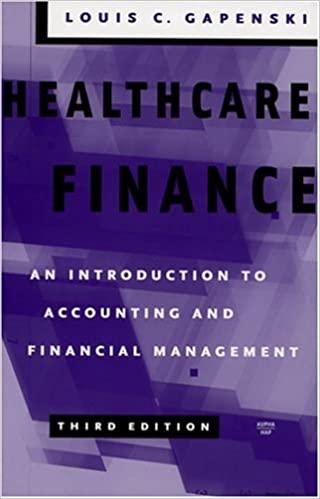



Month S&P500 Walmart Target 2011 1.631 1.606 1.684 1.633 1.682 1.757 2012 May June July August September October November December January February March April May June July August September October November December January February March April May 1.806 1.848 1.783 1.859 1.872 1.884 1.924 1.960 1.931 2.003 1.972 2.018 2.068 2.059 1.995 74,84 74,49 77,94 72,98 73,96 76,75 81,01 78,69 74,68 74,70 76,43 79,71 76,77 75,07 73,58 75,50 76,47 76,27 87,54 85,88 84,98 83,93 82,25 78,05 75,86 69,50 68,86 71,25 63,31 63,98 64,79 63,93 63,27 56,64 62,54 60,51 61,75 56,76 57,95 59,59 60,07 62,68 61,82 74,00 75,91 73,61 76,83 82,07 78,83 79,29 2013 2.105 2.068 2.086 2.182 b. Plot (1) the holding-period returns for Wal-Mart against the Standard & Poor's 500 Index, and (2) the Target holding-period returns against the Standard & Poor's 500 Index. From your graphs, describe the nature of the relationship between stock returns for Wal-Mart and the returns for the S&P 500 Index. Make the same comparison for Target. (5 points) C. Assume that you have decided to invest one-half of your money in Wal-Mart and the remainder in Target. Calculate the monthly holding-period returns for your two-stock portfolio. (The monthly return for the portfolio is the average of the two stocks' monthly returns.) Plot the returns of your two-stock portfolio against the Standard & Poor's 500 Index as you did for the individual stocks in part b. How does this graph compare to the graphs for the individual stocks? Explain the difference. (10 points) d. Make a comparison of the average returns and the standard deviations for all the individual assets and the portfolio that was created. What conclusions can be reached by your comparison in the context of the risk and return? (5 points) e. According to Standard & Poor's, the betas for Wal-Mart and Target are 0.48 and 0.85, respectively. Compare the meaning of these betas relative to the standard deviations calculated above. Answer the question in the context of the systematic and unsystematic risk. (5 points) f. The Treasury bill rate at the end of May 2013 was 4%. Given the betas for Wal-Mart and Target and using the above data for the S&P Index as a measure for the market portfolio expected return, estimate an appropriate required rate of return, using the CAPM model and given the level of systematic risk for each stock. You need to convert the monthly average S&P500 return into annual terms simply by multiplying by 12. What do you conclude? (10 points) Month S&P500 Walmart Target 2011 1.631 1.606 1.684 1.633 1.682 1.757 2012 May June July August September October November December January February March April May June July August September October November December January February March April May 1.806 1.848 1.783 1.859 1.872 1.884 1.924 1.960 1.931 2.003 1.972 2.018 2.068 2.059 1.995 74,84 74,49 77,94 72,98 73,96 76,75 81,01 78,69 74,68 74,70 76,43 79,71 76,77 75,07 73,58 75,50 76,47 76,27 87,54 85,88 84,98 83,93 82,25 78,05 75,86 69,50 68,86 71,25 63,31 63,98 64,79 63,93 63,27 56,64 62,54 60,51 61,75 56,76 57,95 59,59 60,07 62,68 61,82 74,00 75,91 73,61 76,83 82,07 78,83 79,29 2013 2.105 2.068 2.086 2.182 b. Plot (1) the holding-period returns for Wal-Mart against the Standard & Poor's 500 Index, and (2) the Target holding-period returns against the Standard & Poor's 500 Index. From your graphs, describe the nature of the relationship between stock returns for Wal-Mart and the returns for the S&P 500 Index. Make the same comparison for Target. (5 points) C. Assume that you have decided to invest one-half of your money in Wal-Mart and the remainder in Target. Calculate the monthly holding-period returns for your two-stock portfolio. (The monthly return for the portfolio is the average of the two stocks' monthly returns.) Plot the returns of your two-stock portfolio against the Standard & Poor's 500 Index as you did for the individual stocks in part b. How does this graph compare to the graphs for the individual stocks? Explain the difference. (10 points) d. Make a comparison of the average returns and the standard deviations for all the individual assets and the portfolio that was created. What conclusions can be reached by your comparison in the context of the risk and return? (5 points) e. According to Standard & Poor's, the betas for Wal-Mart and Target are 0.48 and 0.85, respectively. Compare the meaning of these betas relative to the standard deviations calculated above. Answer the question in the context of the systematic and unsystematic risk. (5 points) f. The Treasury bill rate at the end of May 2013 was 4%. Given the betas for Wal-Mart and Target and using the above data for the S&P Index as a measure for the market portfolio expected return, estimate an appropriate required rate of return, using the CAPM model and given the level of systematic risk for each stock. You need to convert the monthly average S&P500 return into annual terms simply by multiplying by 12. What do you conclude? (10 points)










